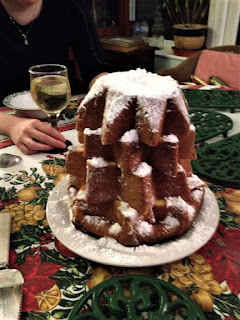Piergiorgio Welby - euthanasia campaigner
Muscular dystrophy sufferer who fought for right to die
The poet, painter and muscular dystrophy sufferer Piergiorgio Welby, whose wish to be given help to die after nine years being kept alive artificially sparked a huge legal, political and religious debate, was born on this day in 1945 in Rome. Welby, the son of an AS Roma footballer with Scottish ancestry, developed MS when he was 17 years old. Throughout the 1960s and 70s his lifestyle helped keep the disease under control. He lived as an artist and writer, following the hippie movement but also hunting and fishing. His use of recreational drugs dulled the symptoms of the disease and he was able to travel extensively in Europe. During this period he met his future wife, Wilhelmine - later known as Mina - who was from Bolzano province in Trentino-Alto Adige but encountered Welby in Rome. Welby decided in the 1980s to wean himself off drugs by embarking on methadone therapy, but the disease then progressed rapidly and he was soon paralysed from the waist down. In 1997, he suffered severe respiratory problems and from that point onwards was dependent on a breathing tube. Read more…
________________________________________
Beppe Severgnini - journalist and author
Books observing national mores have been best sellers
The author and journalist Giuseppe Severgnini was born on this day in 1956 in Crema in northern Italy. Better known as Beppe Severgnini, he is a respected commentator on politics and social affairs, about which he has written for some of the most influential journals and newspapers in Italy and the wider world. Severgnini is equally well known for his humorous writing, in particular his gently satirical observations of the English and the Americans as well as Italians, about whom he has written many books. His biggest selling titles include An Italian in America, which has also been published as Hello America. He has also enjoyed success with La Bella Figura: An Insider's Guide to the Italian Mind, Mamma Mia! Berlusconi's Italy Explained for Posterity and Friends Abroad, and An Italian in Britain. Severgnini is currently a columnist for Corriere della Sera in Italy and the International New York Times in the United States. A former correspondent for the British journal The Economist, he writes in both Italian and English, having spent a number of years living in London, Washington and New York. The son of a notary in Crema, Severgnini graduated in law at the University of Pavia. Read more…
_______________________________________
Renato Guttuso - artist and illustrator
Creator of works representing the victims of Fascist repression
The painter Renato Guttuso, whose illustrations for Elizabeth David’s classic cookery book, Italian Food, gave him international fame, was born on this day in 1912 in Bagheria near Palermo in Sicily. A fierce anti-Fascist, he painted powerful pictures, which he said represented the many people who, because of their ideas, endured outrage, imprisonment and torment. Guttuso’s father, Gioacchino, was a land surveyor who painted water colours and Renato started painting as a child, signing and dating his art works from the age of 13. He was educated in Palermo and then went on to Palermo University. He painted nature scenes featuring flowers, lemon trees and Saracen olive trees, which brought him recognition as a talented Sicilian painter when they were exhibited. He opened a studio with another painter and two sculptors in Palermo. Guttuso became a member of an artistic movement that stood for free and open attitudes and was opposed to Fascism during the years of the Spanish Civil War. He moved to Milan, where his morals and political commitment became even more visible in his paintings. Read more…
_______________________________________
Santo Stefano - Boxing Day
Saint Stephen's Day in Italy
Italians enjoy another day relaxing with their families on the Festa di Santo Stefano which is a public holiday in Italy. It is traditional to visit loved ones and friends that you didn't see the day before to take presents and gifts of food. Lunch will be less formal but still consist of several courses and each area of Italy will have its own specialities. The day remembers Santo Stefano, traditionally thought of as the first Christian martyr, who lived during the first century BC. He aroused enmity with his Christian teachings in Jerusalem. Accused of blasphemy, he was tried and sentenced to death. Eventually he was stoned to death by an angry crowd. The day is celebrated in different ways across Italy. In some towns there are processions, in others there are re-enactments of the nativity. It is also a tradition in some areas to visit nativity scenes in local churches and leave donations. The Sicilian town of Ragusa stages an annual presepe vivente (live nativity scene) on the feast of Santo Stefano, which attracts many visitors. Ragusa is one of the island's most picturesque towns, with spectacular views. It has become a location regularly used for Sicilian detective drama Il Commisario Montalbano (Inspector Montalbano). Read more…

.jpg)


.JPG)
.jpg)
.jpg)
.jpg)
.JPG)



.jpg)


.jpg)


